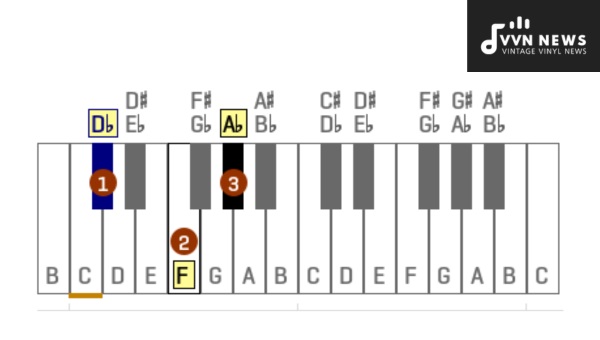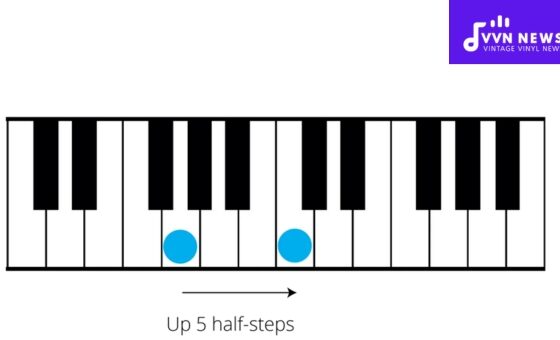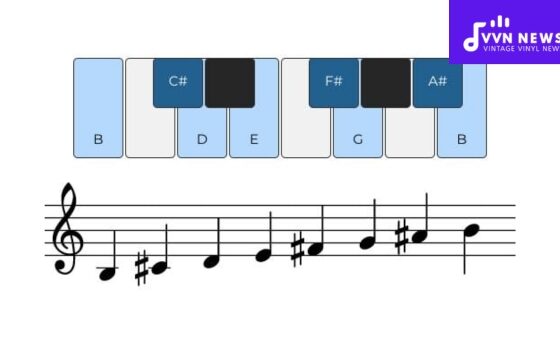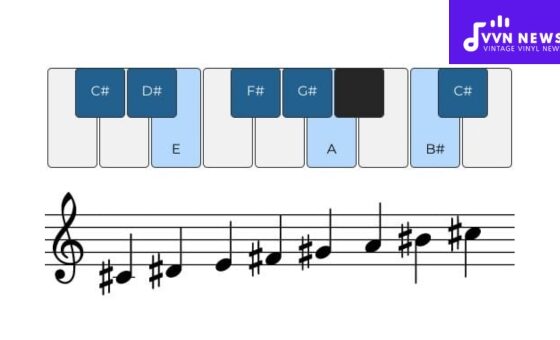If you’re dipping your toes into the melodic world of music theory, you’ve come across the right guide.
Your journey today will lead you to understanding and mastering the distinct chords of D Flat Major Triad.
This powerful triad forms a critical part of many beloved melodies and has resonated in concert halls for centuries.
Imagine being able to master this enriching musical element that not only refines your musical sensibility but also adds depth to your creative expression, introducing you to none other than the D Flat Major Triad – its formation, importance, and application.
With its bold tones and easy-to-grasp structure, this triad is all about crafting harmonious tunes. Let’s walk together down this harmonious path to understand why it holds such a significant place in music compositions worldwide.
What’s a musical triad?
A musical triad is a chord consisting of three notes played simultaneously. Triads are the building blocks of harmony in music and form the basis for many melodies and compositions.
Understanding triads is essential for musicians to create harmonies, chord progressions, and melodic lines. Triads are constructed by stacking intervals of a third on top of each other, resulting in three pitches that create harmonic stability and convey specific emotions.
Different types of triads include major, minor, diminished, and augmented. These triads serve as the foundation for chords used in various genres like classical, jazz, pop, and rock, making them an integral part of music theory.
How is the D Flat major triad formed?
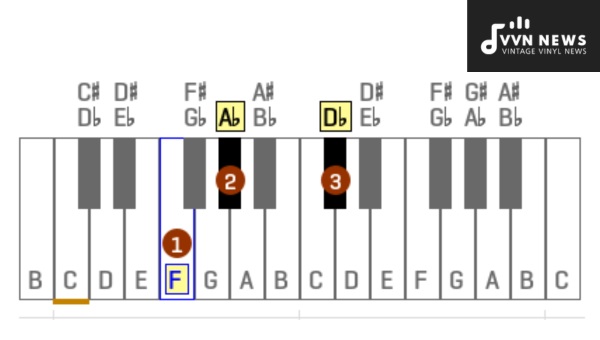
The formation of the D♭ major triad follows a specific pattern that applies to all major triads. To form a major triad, we start with the root note (D♭ in this case) and then add two more notes, which are determined by specific intervals. Let’s break it down:
- Root Note: The D♭ major triad begins with the root note, which in this case is D♭. This note serves as the foundation for the entire chord.
- Major Third Interval: The next note we add to the chord is a major third interval above the root note. In simple terms, this means counting three half steps up from the root note. For D♭, the major third interval is F.
- Perfect Fifth Interval: After adding the major third interval, we move on to adding a perfect fifth interval above the root note. To find this note, we count seven half steps up from the root note. In this case, counting seven half steps from D♭ brings us to A♭.
By combining these three notes—D♭, F, and A♭—we form the D Flat Major Triad.
Starting with the root note of D♭, we add a major third interval (F) and a perfect fifth interval (A♭), resulting in the formation of the D Flat Major Triad (D♭-F-A♭).
Also Read: A Sharp Diminished Triad [Discover This Unique Chord]
Why is D Flat Major Significant in Composition?
When it comes to composition, the choice of key is an important decision that sets the tone and character of a piece. D Flat Major, also known as C Sharp Major, holds significant importance in the world of music and composition. Let’s explore why this key is so significant:
- Rich and Unique Sound: D Flat Major offers a unique and rich sound due to its numerous accidentals. It contains five flats: B♭, E♭, A♭, D♭, and G♭. These accidentals give the key a distinct tonality and color that composers often find appealing.
- Accessible on Keyboard Instruments: On keyboard instruments like the piano or organ, keys with many accidentals can be more challenging to play in due to their complexity. However, D Flat Major offers a user-friendly experience as it allows players to utilize all black keys on the piano keyboard. This accessibility makes it a favorite among pianists.
- Transpositional Convenience: One of the advantages of using D Flat Major in composition is its transpositional convenience. Since this key doesn’t utilize any natural notes (only sharp or flat notes), it is relatively easy for musicians to transpose compositions written in D Flat Major to other keys without encountering conflicting natural notes.
- Orchestral Preference: In orchestral compositions, composers often choose keys based on their preferred tonal balance or the unique qualities of certain instruments in specific keys. D Flat Major is frequently used in orchestral arrangements since instruments such as horns, saxophones, or tubas are commonly tuned to play well in this key.
- Emotional Impact: Every key has its own emotional associations and expressive qualities. In the case of D Flat Major, some describe it as having a dreamy or romantic character while also evoking feelings of introspection or melancholy. Composers often utilize these emotional elements to evoke specific moods or convey deeper emotions in their compositions.
The choice of D Flat Major in composition offers a distinct and unique tonal palette, accessibility on the piano keyboard, transpositional convenience, orchestral preference, and emotional impact. These factors contribute to its significance and popularity among composers across various genres of music.
How to play D Flat major triad on piano and guitar?
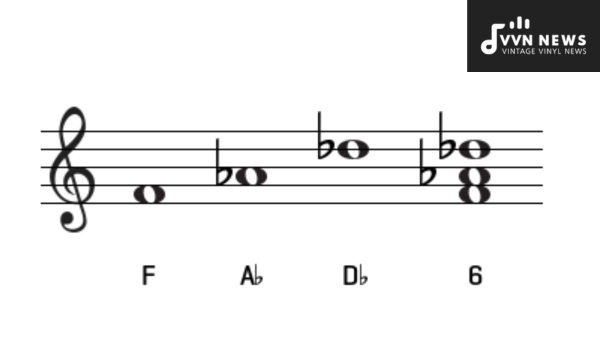
The D Flat major triad consists of three notes: D♭, F, and A♭. In order to play the D Flat major triad on the piano and guitar, you can follow the following instructions:
Piano:
- Find the note D♭ on the piano keyboard. It is located two black keys to the left of middle C.
- Place your thumb (first finger) on D♭.
- Skip one key and place your third finger on F.
- Skip another key and place your fifth finger (pinky) on A♭.
- Play these three notes simultaneously to produce the D Flat major triad.
Guitar:
- Locate the note D♭ on your guitar fretboard. On standard tuning, it can be found on the fourth fret of the A string (fifth string).
- Press down the fourth fret of the A string with your index finger to produce D♭.
- Barre across strings 4, 3, and 2 with your ring finger pressing down all strings at once to create F.
- Press down the fourth fret of the G string (third string) with your index finger to produce A♭.
- Strum or pluck all four strings simultaneously.
It’s worth mentioning that these are just a few positions for playing the D Flat major triad on piano and guitar.
Experimenting with different positions up and down the keyboard or fretboard will enable you to find voicings that suit your style and sound preferences.
Also Read: B Diminished Triad [Master This Unique Guitar Chord]
Common Chord Progressions with D Flat Major
Understanding common chord progressions involving the D Flat Major Triad can greatly enhance your musical compositions and improvisations. These progressions provide a framework for creating harmonic movement and add color and emotion to your music. Here are a few popular chord progressions that incorporate the D Flat Major Triad:
- I – IV – V: This progression is one of the most widely used in music. In the key of D Flat Major, it would involve the chords Db, Gb, and Ab. This progression creates a sense of resolution and stability.
- IV – V – I: This progression provides a strong resolution back to the tonic chord, Db Major. In this case, the chords Gb, Ab, and Db would be used.
- ii – V – I: This classic progression adds some complexity by incorporating the ii chord before resolving to the V and then to the tonic I chord. In D Flat Major, this would involve playing Ebm7, Ab7, and Db.
- vi – IV – I – V: Commonly found in pop and rock music, this progression creates a catchy and memorable sound. In D Flat Major, it would include Bbm, Gb, Db, and Ab chords.
- I – vi – IV – V: Another popular progression heard in many genres is the I-vi-IV-V pattern. It has a catchy and uplifting vibe when played in D Flat Major using the chords Db, Bbm, Gb, and Ab.
By familiarizing yourself with these common chord progressions involving D Flat Major Triad, you can expand your musical palette and create engaging compositions or improvise melodies that resonate with listeners.
Also Read: G Diminished Triad [Guide To Unique Guitar Chords]
How to recognize D Flat major triad by ear?

Recognizing triads by ear is an essential skill for any musician, and the D Flat major triad is no exception. Here are some tips to help you identify it accurately.
- Listen for the distinct sound: The D♭ Major triad has a rich and full sound that can be easily recognizable once you familiarize yourself with its distinctive characteristics.
- Focus on the root note: The first step is to identify the root note, in this case, D♭. Train your ear to recognize its unique pitch and tonal quality.
- Identify the major third: The next note of the triad is F, which creates a major third interval from the root note. Major thirds have a happy and bright sound compared to minor thirds.
- Listen for the perfect fifth: The final note of the D Flat Major triad is A♭, forming an interval called a perfect fifth with the root note. Perfect fifths have a stable and strong quality.
- Practice chord progressions: Play chord progressions in D♭ Major that include other chords alongside the triad, such as IV (G♭) and V (A♭). This will help you hear how the D♭ Major triad fits within a musical context.
By training your ear to recognize these unique qualities of the D Flat major triad, you’ll become more confident in identifying it by ear in various musical pieces and compositions.
Famous Pieces with D Flat Major Triad
The D Flat Major Triad has been utilized in numerous famous compositions across various genres, showcasing its versatility and musical significance. Let’s explore some of the notable pieces that feature this triad:
- Claude Debussy – “Clair de Lune”: This iconic piano piece from Debussy’s Suite bergamasque highlights the soothing and dreamlike qualities of the D Flat Major Triad. Its delicate and emotive melody captures the essence of moonlit beauty, creating a sense of tranquility and introspection.
- Frederic Chopin – “Nocturne in D Flat Major”: Known for his expressive piano works, Chopin incorporates the D Flat Major Triad in this enchanting piece. With its lyrical melodies and graceful harmonies, this Nocturne showcases the romantic qualities of this triad, evoking a sense of longing and nostalgia.
- Sergei Rachmaninoff – Symphony No. 2: In this monumental orchestral work, Rachmaninoff employs the rich sound of the D Flat Major Triad to create powerful and emotional moments throughout the composition. It contributes to the grandeur and intensity of the symphony, heightening its dramatic impact.
- George Gershwin – “Rhapsody in Blue”: Gershwin’s iconic jazz-infused composition features prominent use of the D Flat Major Triad. Combining elements of classical music with jazz improvisation, this piece showcases the versatility of triads in different musical styles.
- Richard Wagner – “Tristan und Isolde”: In his opera masterpiece, Wagner incorporates the expressive qualities of the D Flat Major Triad to convey intense emotions and evoke a sense of love and longing between Tristan and Isolde.
- Antonin Dvorak – Symphony No. 9 (“From the New World”): Utilizing the D Flat Major Triad, Dvorak creates a sense of optimism and vitality in this symphony. The famous second movement features a beautiful melody that incorporates this triad, adding to its richness and melodic appeal.
These pieces represent just a fraction of the compositions that utilize the D Flat Major Triad. Exploring these musical masterpieces not only allows us to appreciate the expressive qualities of this triad but also provides insights into how it is used to convey different moods, emotions, and musical styles.
Also Read: A Diminished Triad [Unlock Hidden Chords On Your Guitar]
What are D Flat major triad inversions and Their application on Guitar and Piano?

Inversions within a triad occur when the order of the notes is changed, resulting in a different voicing. These inversions add diversity and depth to your chord progressions, allowing for smooth and interesting transitions between different positions on the instrument.
D Flat Major Triad Inversions:
The D Flat Major Triad, consisting of the notes D♭, F, and A♭, can be inverted by moving the lowest note to the top or vice versa. There are three possible inversions:
- Root Position: This is when the root note (D♭) is played as the lowest note in the chord. The other notes in this inversion are F and A♭. In this position, the root note provides a strong foundation for the chord.
- First Inversion: The first inversion of D Flat Major Triad involves moving the root note (D♭) up an octave so that it becomes the highest note in the chord. The other notes in this inversion are F and A♭.
- Second Inversion: To form a second inversion, we move both the root note (D♭) as well as its higher neighboring pitch F up an octave so that they become the two highest notes in the chord structure. The remaining note is A♭.
Application on Guitar:
To play these inversions on guitar, you can use various chord voicings across different fretboard positions:
- Root Position: Place your index finger on 4th fret of the A string for D♭ (root), ring finger on 6th fret of D string for F, and pinky finger on 6th fret of G string for A♭.
- First Inversion: Start with your index finger barred across 6th frets of the D, G, and B strings for F (root), ring finger on 7th fret of the A string for A♭, and pinky finger on 8th fret of the D string for D♭.
- Second Inversion: Using a partial barre chord shape, place your index finger barred across 9th frets of the D and G strings for A♭ (root), middle finger on 11th fret of B string for D♭, and ring finger on 11th fret of the high E string for F.
Application on Piano:
On a piano keyboard, playing inversions involves shifting the positions of the notes accordingly:
- Root Position: Place your thumb on D♭, middle finger on F, and pinky finger on A♭ in a close position near each other.
- First Inversion: Start with your thumb on F, index finger on A♭, and pinky finger on D♭. This places F as the lowest note.
- Second Inversion: Begin with your thumb on A♭, middle finger on D♭, and pinky finger on F. This inversion places A♭ as the lowest note.
Understanding these inversions will allow you to create smoother chord progressions and add musical interest to your compositions when playing piano or guitar. Experimenting with these different voicings will help you discover new sounds and expand your musical palette.
Also Read: A Flat Minor Triad [Guide to Unusual Guitar Chords]
FAQs About D Flat Major Triad
How is the D Flat Major Triad formed?
The D Flat Major Triad is formed by taking the first, third, and fifth notes of the D♭ major scale. In this case, the triad consists of the notes D♭, F, and A♭.
Why is the D Flat Major Triad significant in composition?
The D Flat Major Triad holds significance in composition as it provides a stable and harmonically rich foundation. It is often used to evoke feelings of warmth and brightness in music.
How can I play the D Flat Major Triad on piano and guitar?
On piano, you can play the D♭ Major Triad by placing your thumb on D♭, your middle finger on F, and your little finger on A♭. On guitar, you can play it by placing your index finger on the 1st fret of the low E string (D♭), your ring finger on the 2nd fret of the A string (F), and your pinky finger on the 4th fret of the D string (A♭).
What are common chord progressions involving the D Flat Major Triad?
Common chord progressions involving the D Flat Major Triad include I-IV-V (D♭-G♭-A♭) and ii-V-I (E♭ minor-A♭-D♭). These progressions provide a solid harmonic foundation for many songs across different genres.
How can I recognize the sound of a D Flat Major Triad by ear?
To recognize a D Flat Major Triad by ear, listen for a combination of notes that convey stability and a sense of resolution. The trio of pitches – D♭, F, and A♭ – will sound harmonically satisfying when played together.
Conclusion
The D Flat Major Triad is a fundamental concept in music theory that plays an essential role in creating harmonies, chord progressions, and melodies.
Understanding the construction and application of the D Flat Major Triad can greatly enhance a musician’s ability to compose and perform.
By mastering the D Flat Major Triad on instruments like the piano or guitar, musicians can incorporate this versatile triad into their playing and explore its potential in various musical contexts.
The D Flat Major Triad is a cornerstone of music theory that every aspiring musician should familiarize themselves with.
